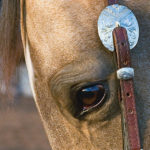June 12, 2012
The naming of five British equestrians to their nation’s nominated Olympic athletes list for the sport of eventing may be a bit confusing to readers. Why five? And which riders are actually “on the team” and which of the five will compete for individual medals. As more nations announce their teams in the next few weeks, the public may be expecting riders to be designated as “team” or “individual” competitors. Equestrian team sport championships–and many other sports–have varying methods of determining how medals will be distributed. Some sports have more than one event–a team competition and an individual–and riders named to the “team” may compete on the team or on their own. At London this summer, the finale showjumping will be electrifying, because there will be so much at stake riders who have no shot at a team medal will be riding for their lives in order to move forward to the individual round. All five eventing riders selected for the team will also be in contention for individual honors. The first show jumping event, for the team medals, will require horses who completed cross-country and pass the second vet check to jump between 11 and 13 obstacles. The course will be between 500 and 600 meters long, with a required speed of 375 meters per minute. Team medals will be determined on scores from that round. Then, the top 25 horse and rider combinations will move forward for the so-called “individual medal round”. This second test, contested only by those 25 combinations will be a shorter course (350 to 500 meters) with between nine and 12 jumps. Of course, it remains to be seen how factors such as footing, weather, injuries and the relative difficulty of the cross-country may affect how many of the 75 eventing combinations even make it to the final day. Also, it’s interesting to note that all five riders will indeed be riding for a team medal. But when the team scores are compiled to determine who won the medal, only the top three scores from the five will be used to calculate who actually won the medal. But they’ll all share the team medal. This scoring system makes for some interesting scenarios, and the distinct possibility that the nation with the best scoring “team” in terms of total score or average among the five riders may actually lose out to a nation with three stellar scores. Riders who withdraw on or after cross-country may still find themselves on the medal ceremony podium. Here’s hoping the event and television commentators can explain the system and the scoring. Thanks to Steve Fleischer for his photo of the team medal ceremony at Hong Kong.????????? Fran Jurga is a freelance writer and editor from Gloucester, Massachusetts. Her award-winning blogs include The Jurga Report for EQUUS Magazine and War Horse News on the 2011 Steven Spielberg film. Fran is the founder of Hoofcare and Lameness Journal and writes a specialist Hoof Blog.? Fran wrote the WorldRides blog for the Hong Kong equestrian events of the 2008 Beijing Olympics and the Discover WEG blog for the Alltech FEI World Equestrian Games in 2010.You can follow Fran on Facebook, Pinterest and Twitter for more news about the horse world.
 Why five? Only three of five national riders’ scores will count toward team medals; here you see five Australians receiving the silver medal at the 2008 Olympic Games, even though only the best three scores were counted. (Steve Fleischer photo)
Why five? Only three of five national riders’ scores will count toward team medals; here you see five Australians receiving the silver medal at the 2008 Olympic Games, even though only the best three scores were counted. (Steve Fleischer photo)




